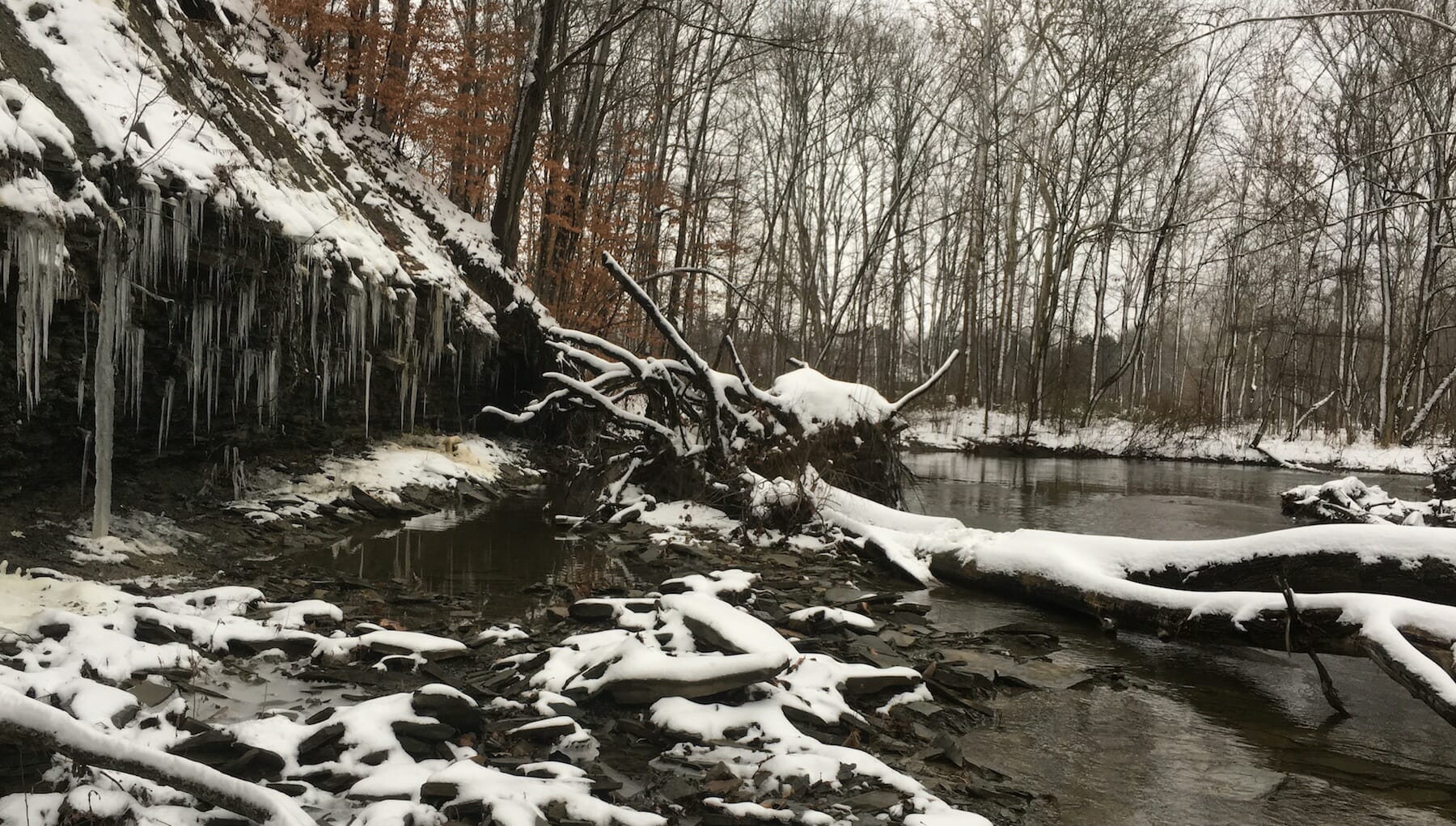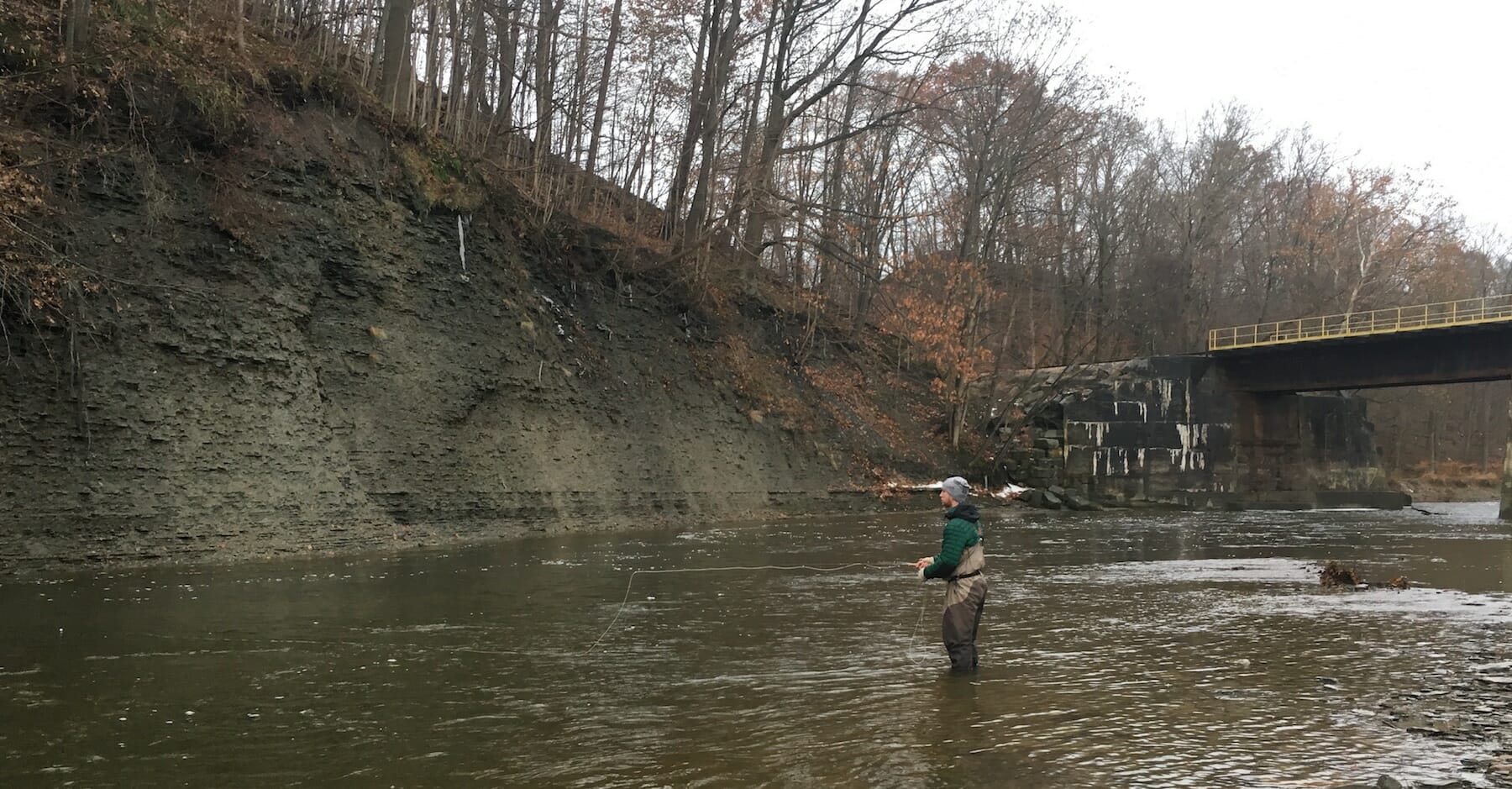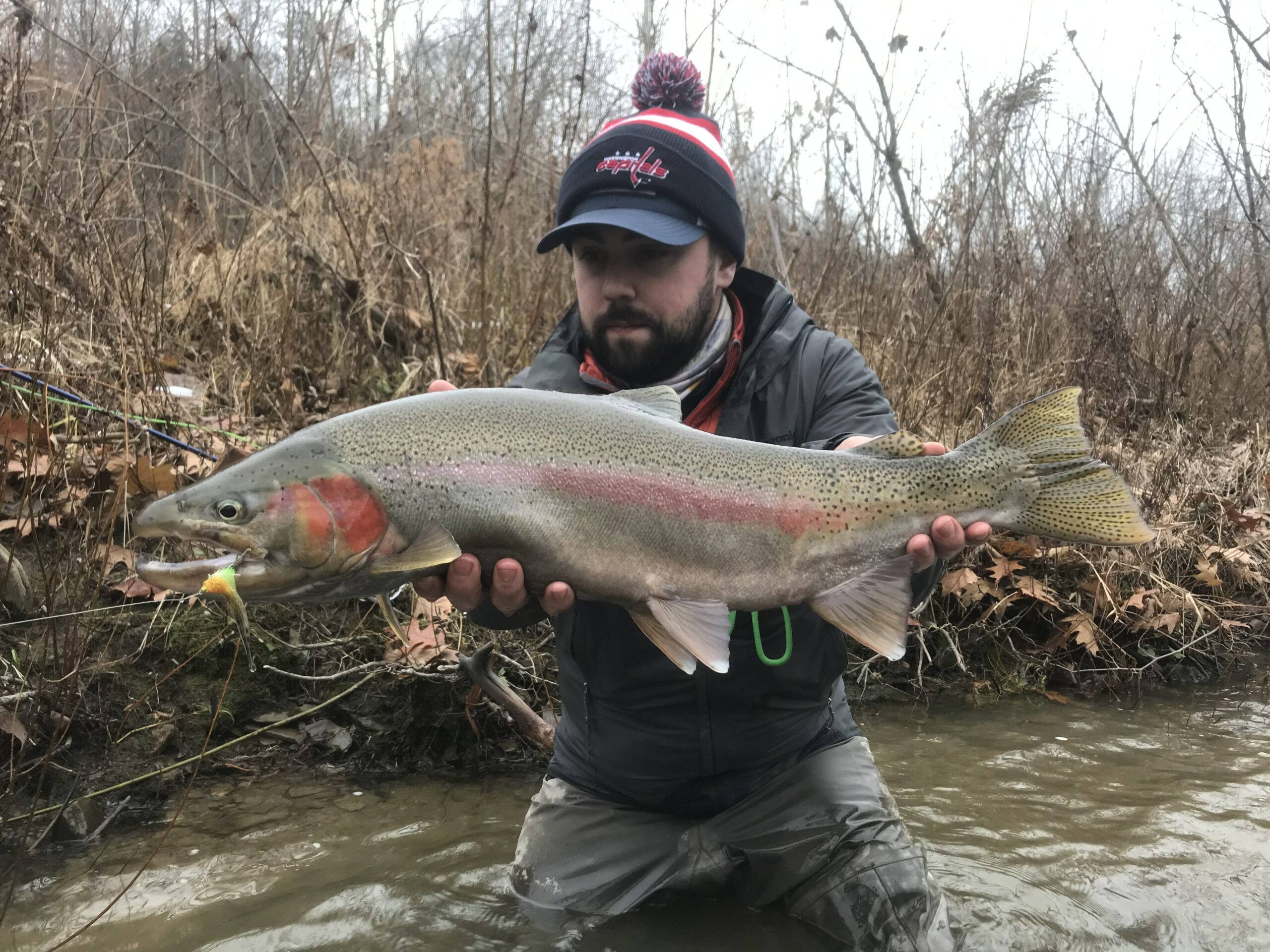Nick Halle, TU’s volunteer operations coordinator, kept at it even after falling in over his head and was rewarded with this nice buck steelhead from Ohio’s Conneaut Creek during a recent TU staff steelhead outing.
By Mark Taylor
“I’ve lost all faith.”
The admission came from Keith Curley as we stood in the snow on the banks of Elk Creek, after a day of late November steelhead fishing.
Keith is one of the best and most dedicated anglers I know, so when he loses faith you know it’s been tough.
Our day had started with a three-and-a-half-hour caravan drive to Erie in pelting, freezing rain. Then we spent about six hours flogging the icy waters of Elk Creek.
Seven of us had come here for a weekend of fishing after a multi-day Trout Unlimited Eastern Conservation staff meeting in State College
The trip had been my idea.
“Since we’re already going to be in Pennsylvania, why don’t we spend the weekend fishing for steelhead after the meeting?” I had asked a few of my hard-charging, hard-fishing colleagues.
The final night of our meeting we pored over maps with a couple co-workers who couldn’t make the trip highlighting hot spots. “When it’s good, you can have 50-fish days,” one of them said.
 Upper Elk Creek was beautiful after a snowfall, but the fishing was challenging for a group of TU staffers who spent a couple of days recently targeting the Lake Erie tributary steelhead.
Upper Elk Creek was beautiful after a snowfall, but the fishing was challenging for a group of TU staffers who spent a couple of days recently targeting the Lake Erie tributary steelhead.
It hadn’t been good.
That first session produced just five fish, four for Cole “The Fish Whisperer” Baldino, who manages TU restoration work in the Delaware River basin, and one for mid-Atlantic organizer Rob Shane’s dad, Scott, who had driven up from Ohio to fish with us.
There was exactly one other hooked fish among the rest of us. I was the one who bid that fish farewell after one jump, leading me to muse aloud, “Is it indeed better to have hooked and lost than to never have hooked at all?”
“There’s no question,” Keith responded. “It’s way better to actually get some bites. It keeps hope alive.”
And that really is true.
Fishing is an optimist’s endeavor. We do it not necessarily because of the enjoyment of the act itself — although there’s something to that — but for the anticipation of the thrill that is to come.
But that stops working when the anticipation is replaced by dread. When “This next cast is going to be the one” turns into “Who am I kidding? This is hopeless.”
 Taylor Ridderbusch, TU’s Great Lakes organizer, fishes a pool on Ohio’s Conneaut Creek on Dec. 1.
Taylor Ridderbusch, TU’s Great Lakes organizer, fishes a pool on Ohio’s Conneaut Creek on Dec. 1.
Steelhead, like muskies, can be among the most trying targets.
With those critters, one or two encounters a day is often considered a good outing. But it’s all relative and Great Lakes fishing often is better than that. So, when it’s not, and when you add uncomfortable weather into the mix, you’ve got a good recipe for self-doubt.
Time can help reset things. Unfortunately for Keith, he wouldn’t even get a chance for redemption. He got to cap his long, fishless day with a long drive home that night.
The rest of us recharged over beers and wings that night in Erie. By the next morning, when we hit the lower reaches of Elk Creek, we had high hopes.
The result? Two fish for Scott. Not even the Fish Whisperer got a bite.
At midday we lost another man, mid-Atlantic policy director Dave Kinney bailing and heading home. The rest of us rolled to yet another river, Conneaut Creek just over the border in Ohio.
An hour in I was working a long pool alongside Scott and our Great Lake organizer, Taylor Ridderbusch, when my indicator plunged. I set the hook and smiled as a small-but-bright steelhead shot upstream.
After a few seconds the hook pulled.
I groaned.
But there was hope.
This next cast was going to be the one. I just knew it.
Mark Taylor Trout Unlimited’s eastern communications director, based in Roanoke, Va. His hooked-to-landed ratio for steelhead is well under 50 percent and dropping.



